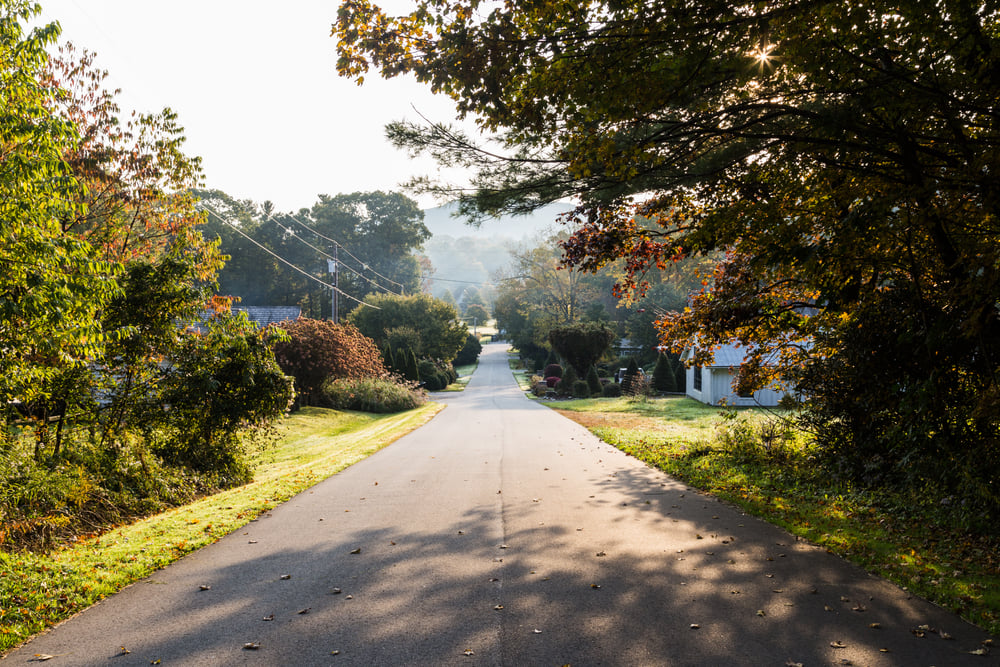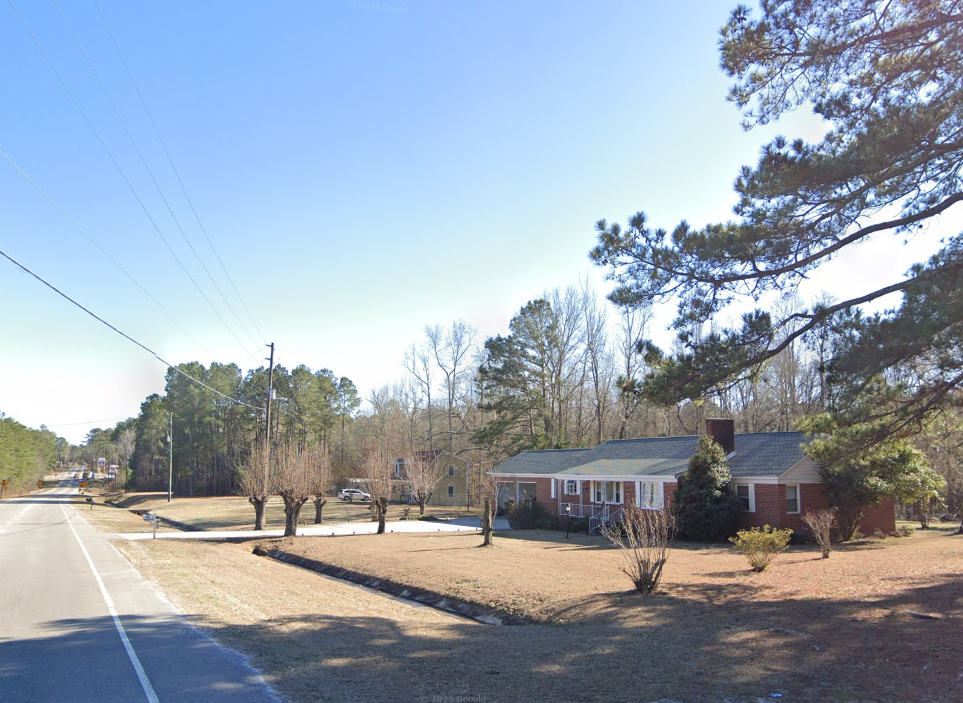
When I think about escaping the hustle and embracing the tranquility of nature, Western North Carolina always comes to mind. This region is dotted with hidden gems—small towns where life moves at a gentler pace and the beauty of the mountains envelops you.
Over the years, I’ve explored many of these secluded spots, each offering its unique charm and serenity. From tucked-away valleys to lakeside retreats, these towns provide the perfect backdrop for those seeking peace and quiet.
I’m excited to share my countdown of the top 25 secluded towns in Western North Carolina, places that might just become your next favorite escape.
25. Bryson City: River Mist and Mountain Calm
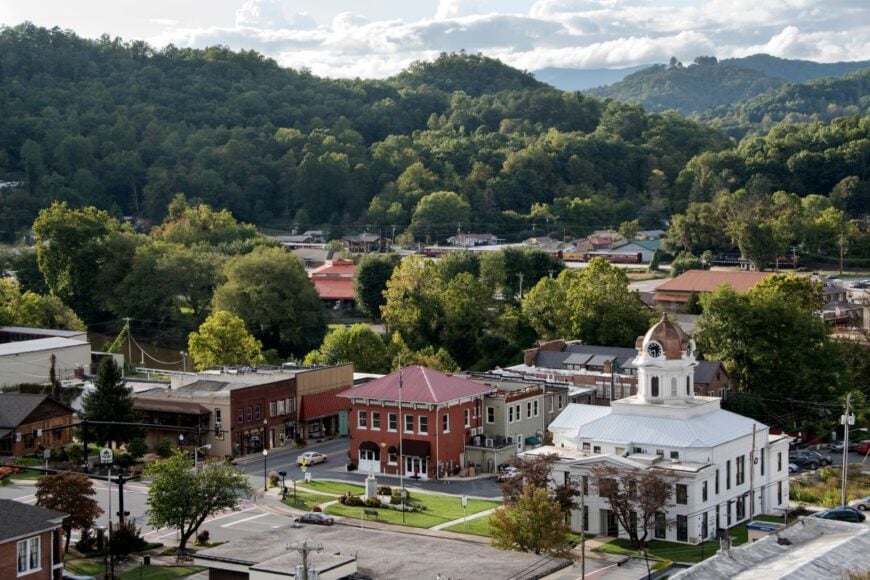
Nestled in the hush of the Nantahala National Forest, Bryson City feels like a well‑kept secret where river mists curl through the streets at dawn. It’s secluded — miles from the bustle, reached by a gentle drive winding through forested hollows.
The town’s vibe is quaint and gently adventurous, with the cozy hum of craft shops, historic rails, and forest whispers all around. Things to do include riding the Smoky Mountain Railroad, paddling the Tuckasegee River, exploring Mingo Falls, browsing local art galleries, or simply lingering over coffee on a porch.
Tourism and outdoor recreation anchor the community in a relaxed rhythm. You’ll leave with the memory of quiet locomotive whistles and the kind of calm that stays with you.
Where is Bryson City?
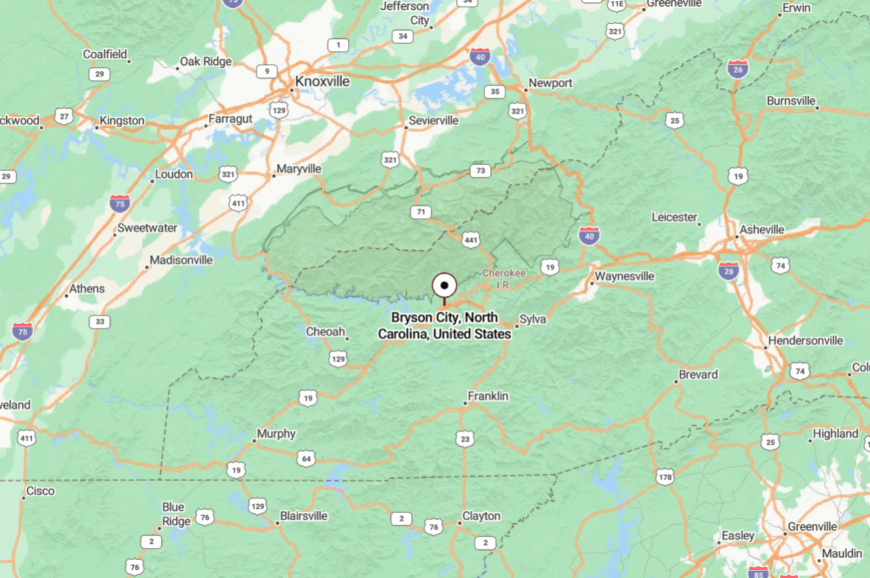
Bryson City lies deep in Swain County, tucked at the edge of the Great Smoky Mountains National Park, roughly 40 miles west of Asheville by road. You reach it via a scenic two‑lane forest highway that bends through thick hardwoods.
The remoteness only grows as you approach—each mile through moss‑clad trees deepens the sense that you’ve slipped away from everything. It’s the kind of arrival that makes even the air feel hushed.
24. Sylva: Artsy Hillside Serenity
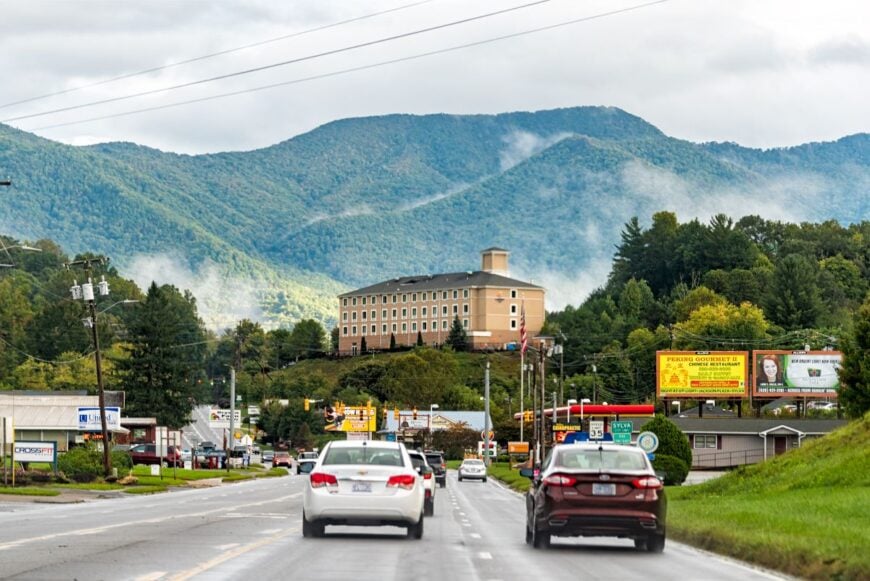
Sylva blooms quietly in the mountains, its art‑strewn downtown echoing with tales of rivers, murals, and Appalachian flair. Out of sight from larger highways, it clings to the quieter reaches near the Tuckasegee River.
The vibe here is artsy‑rustic and serene, with vibrant murals on old brick walls, tucked cafes, and easy access to forest trails. Highlights include strolling through vintage shops, hiking in Gorges State Park, river tubing, exploring the local brewery scene, and catching live music at a café.
A blend of tourism and small‑town businesses keeps the rhythm laid‑back yet creative. It’s that kind of place where you feel the artist’s brush in the breeze, and the world slows its pulse around you.
Where is Sylva?

Sylva sits in Jackson County, perched just off the Blue Ridge Parkway, about 50 miles southwest of Asheville. You arrive via quiet highways that curve alongside rivers and ridges, the forest opening gently as the town appears.
The road feels like an invitation to step outside time. Close enough to map, but distant enough to feel like its own quiet world.
23. Dillsboro: Quiet Craftsmanship by the River
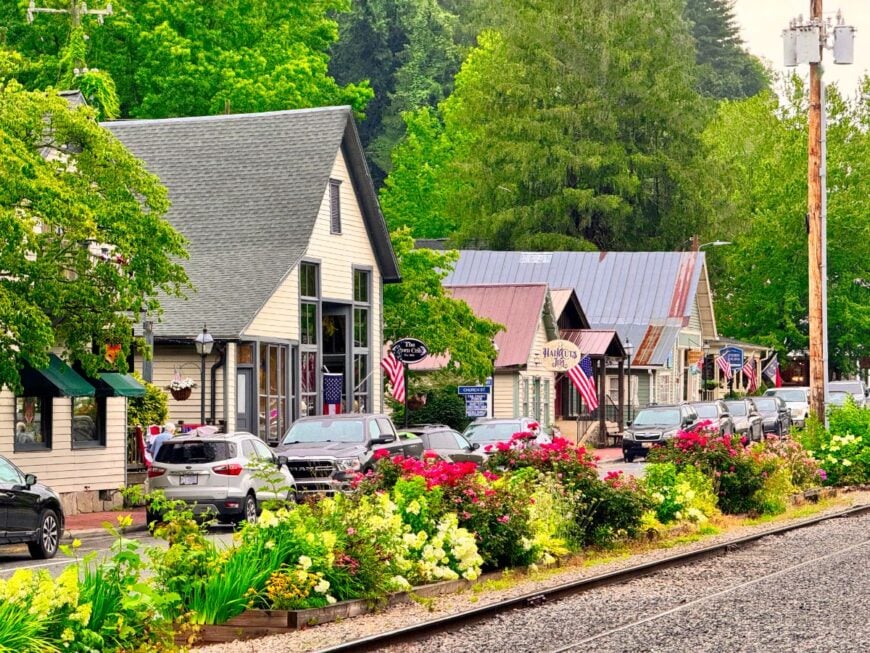
Dillsboro is a storybook Hamlet where vintage railcars sit silent beneath canopyed oaks, and craft studios whisper of quiet artistry. It’s perfectly secluded — set off the main routes, nestled by the Tuckasegee River.
The vibe is sleepy, charming, and art‑laden, with ceramic kilns glowing in windows and antique shops lining mossy sidewalks. You can ride the Great Smoky Mountains Railroad, browse artisan galleries, dip into historic churches, paddle the river, or picnic by shaded banks.
Economy here pulses with tourism and local crafts. It’s the kind of place that tucks a small smile into your heart.
Where is Dillsboro?
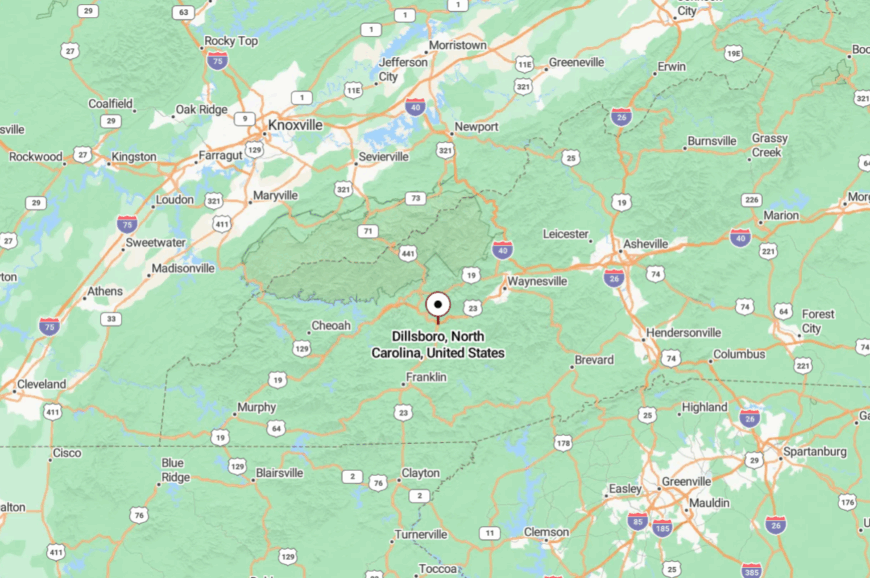
Dillsboro rests snug in Jackson County, just a few miles from Sylva, tucked into a riverbend between forested hollows.
A narrow two‑lane road through woods leads you there—few signs, no rush, just the murmur of water and pines. It’s close enough to find, but quiet enough to feel found.
22. Franklin: Whispered Histories and Forested Charm
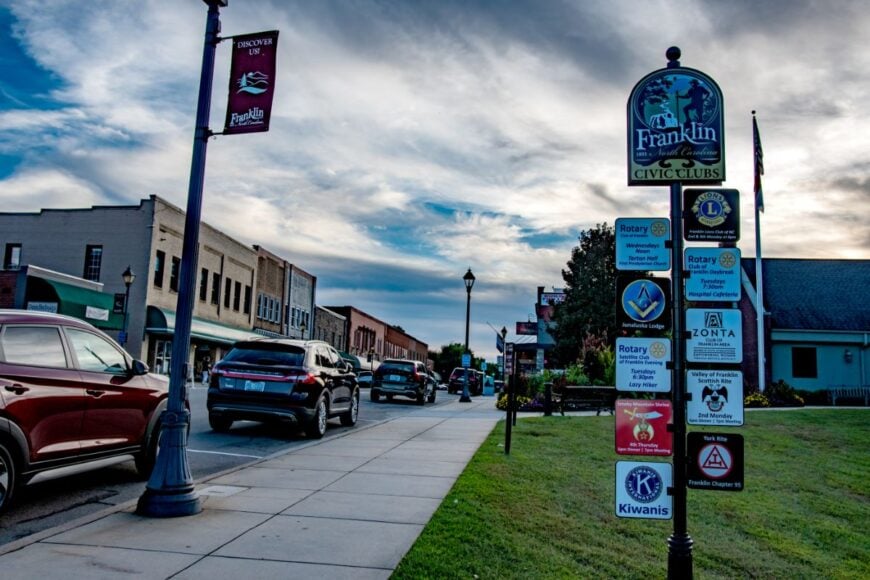
Franklin is a whisper‑quiet town where gem mines meet Appalachian tales—its streets are lined with historic storefronts and old‑timers’ stories. Its sense of seclusion comes from being bordered by forested ridges and curving back roads.
The vibe is charmingly nostalgic and warm, with pastel storefronts, tinkling mineral shops, and the hum of history. Visit the Franklin Gem & Mineral Museum, wander the Macon County Historical Society, hike nearby waterfalls, shop antique markets, or attend a local play.
Tourism, gemstones, and heritage preservation form its economic threads. It’s the kind of place whose echoes of the past feel like an embrace.
Where is Franklin?
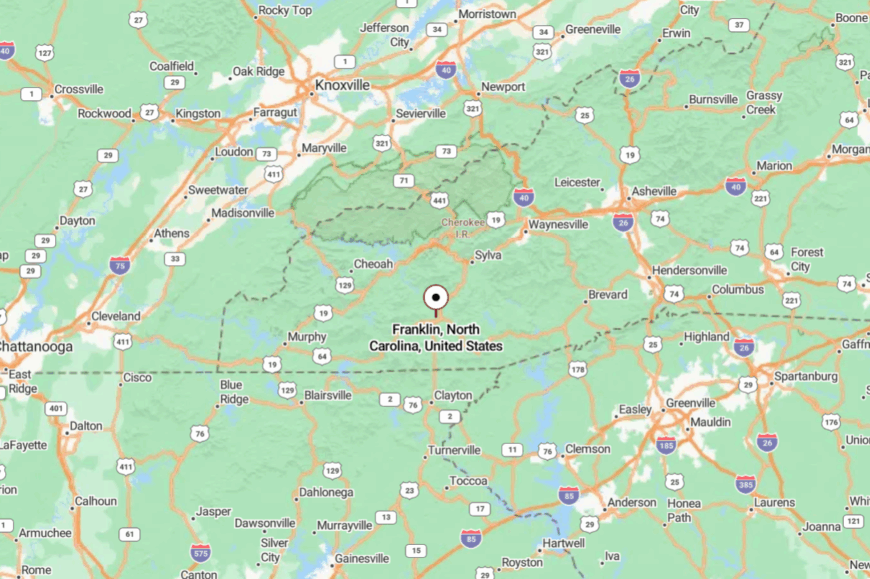
Located in Macon County in the far southwestern mountains, Franklin lies about 65 miles south of Asheville, nestled between forest ridges. You’ll follow narrow, winding roads that climb and drop through hollows—each bend easing you further into stillness. It’s reachable, yes—but feels like a world apart.
21. Cashiers: Waterfalls and Mountain Light
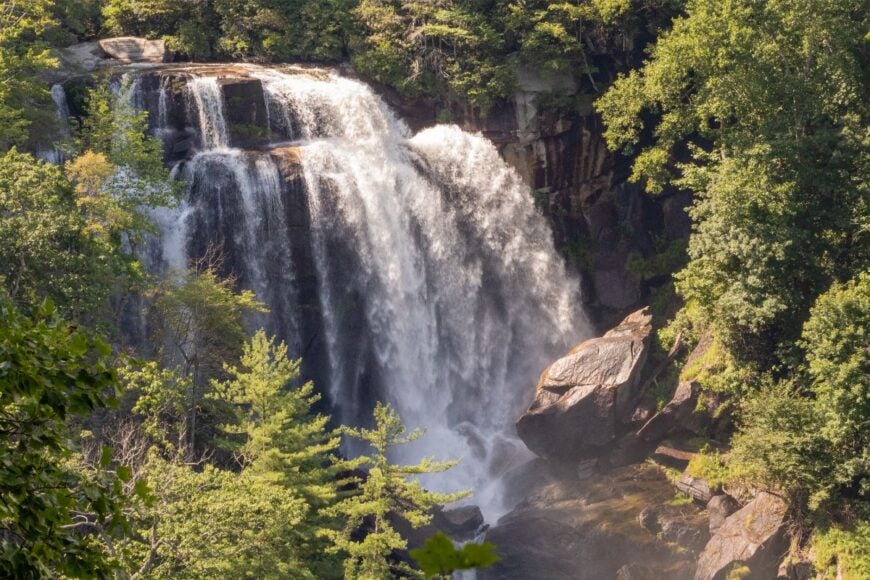
Cashiers lies beneath granite peaks, where waterfalls sound like lullabies and summer air tastes of cool forest moss. Its seclusion comes from being perched over 3,000 feet in elevation, surrounded by sprawling national forest.
The vibe is tranquil, upscale rustic—a place of boutique shops, shaded parks, and soft mountain light. Hike Whiteside Mountain, swim at Cashiers Sliding Rock, shop local markets, explore Secret Falls, or relax lakeside.
The economy blends tourism, arts, and fine dining. It’s that kind of town where you come for one glade and stay for the hush of mountain air.
Where is Cashiers?
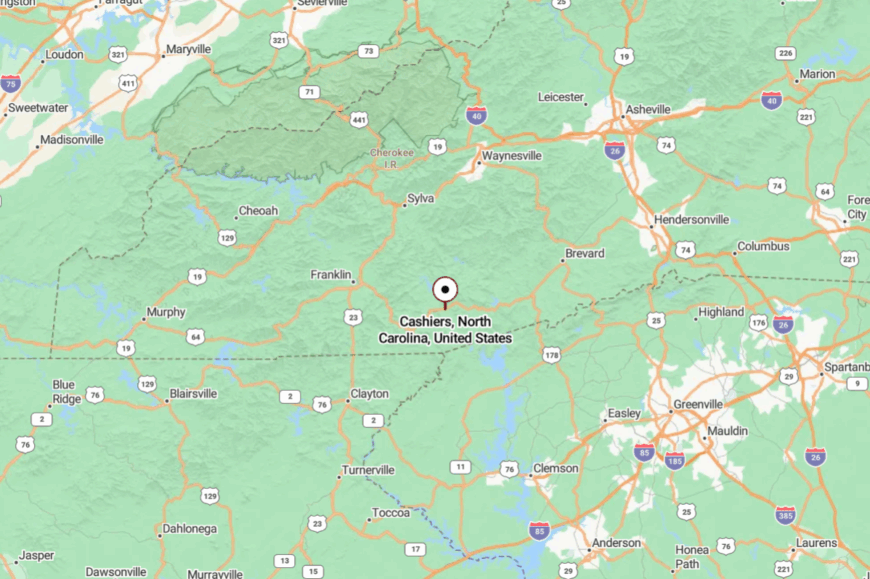
Cashiers inhabits the Highlands‑Cashiers Plateau in western North Carolina, near the Georgia border and about 75 miles southwest of Asheville. Access is via forested highways that hug ridgelines and drop into shaded valleys.
The journey itself feels like a slow exhale. You arrive, and the mountains hold you gently.
20. Highlands: Refined Solitude on a Cloudy Ridge
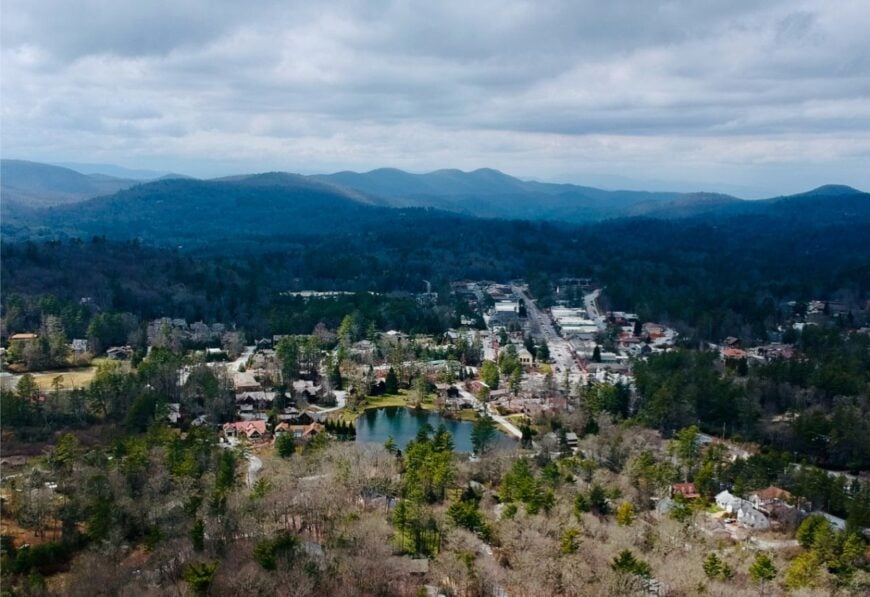
Highlands perches atop a mist‑kissed plateau where fog drifts through boutiques and birches sway in quiet elegance. Surrounded by dense forest and lofty heights, it’s seclusion by elevation.
The vibe is refined, peaceful, even poetic—gracious inns, shaded gardens, and whisper‑quiet streets. Hike in Panthertown Valley, meander Whiteside Mountain trails, shop in charming boutiques, dine at elevated cafés, or relax in botanical gardens.
Tourism anchors the town with subtle sophistication. It’s a place that feels like stepping into a hushed painting—delicate, unforgettable.
Where is Highlands?
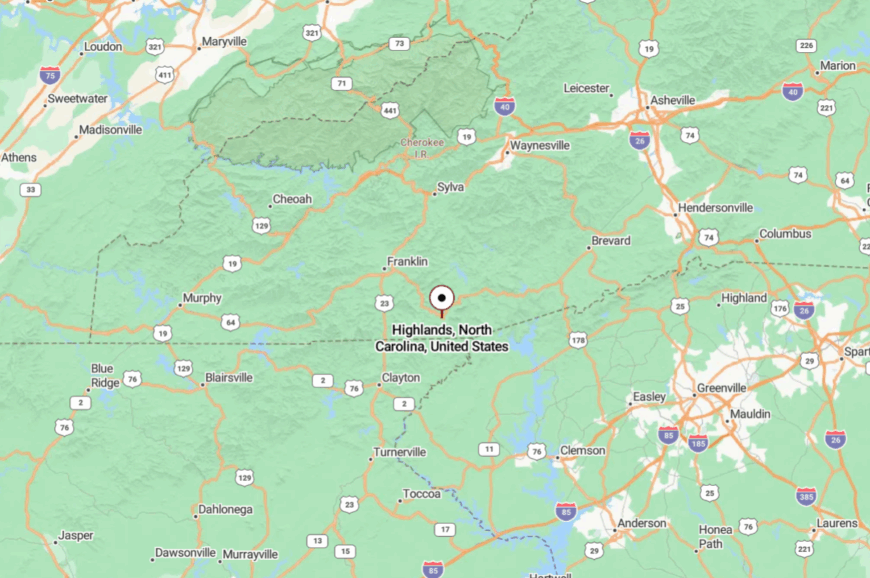
Set high in Macon County, just north of the South Carolina border, Highlands is around 80 miles southwest of Asheville at nearly 4,100 feet elevation.
You wind up via graceful mountain roads that rise gently with each turn. It’s accessible but feels perched above the world, in its own calm sky.
19. Old Fort: Frontier Echoes in Forested Gaps
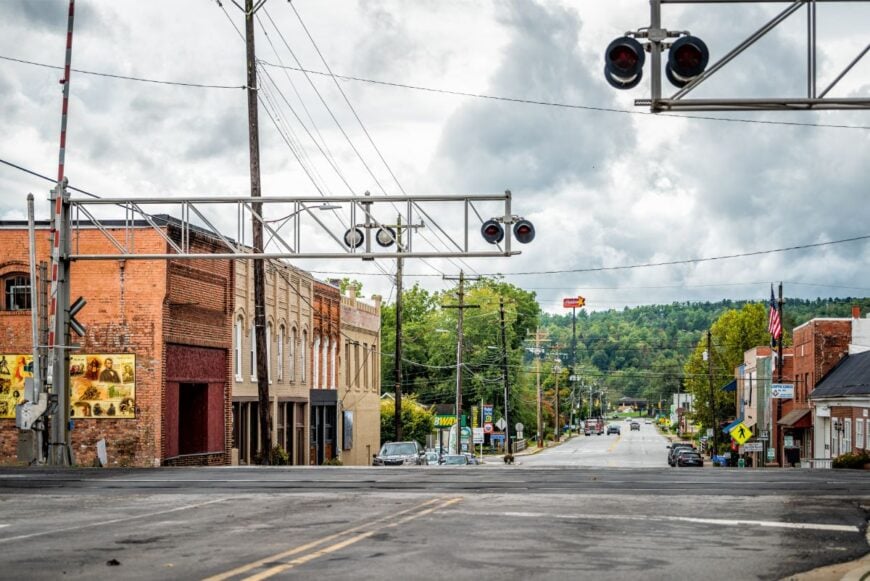
Old Fort is a quiet relic of frontier days, where locomotive whistles mingle with museum echoes and green hills cradle its edges. It feels secluded—nestled near mountain gaps, away from speeding interstates.
The vibe is historical and rooted, with pioneer reenactments, steely fountains, and local festivals. Must‑do’s include visiting Andrews Geyser, touring the Mountain Gateway Museum, exploring Davidson’s Fort Historic Park, catching Oktoberfest, or wandering the railroad depot.
Heritage tourism and small‑town culture define it. It’s a place where stepping back in time feels like coming home.
Where is Old Fort?
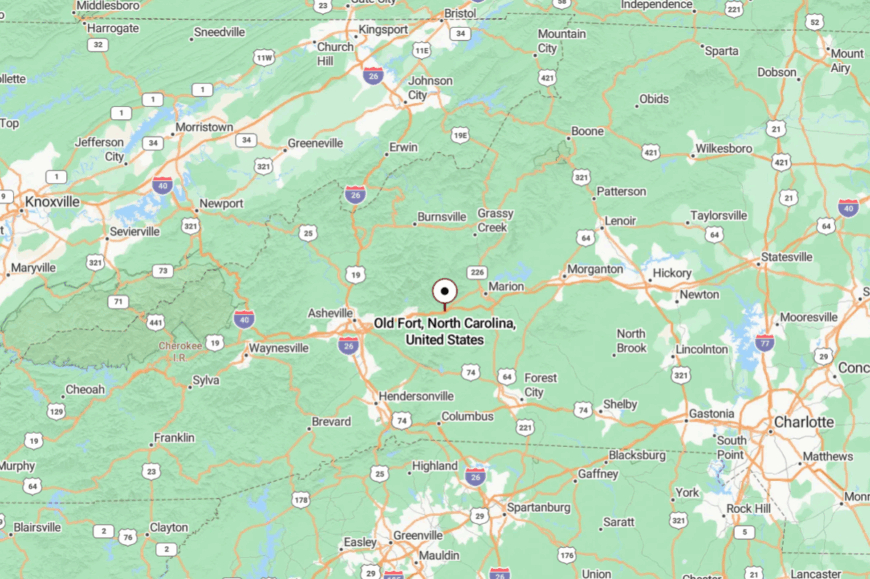
Perched in McDowell County, about 25 miles east of Asheville, Old Fort nestles at the entrance to mountain gaps. Travel there via the quiet US‑70 that threads through forested valleys. It’s close to city reach but wrapped in the kind of still that makes hours feel like moments.
18. Nantahala: Deep Gorges and Ancient Quiet
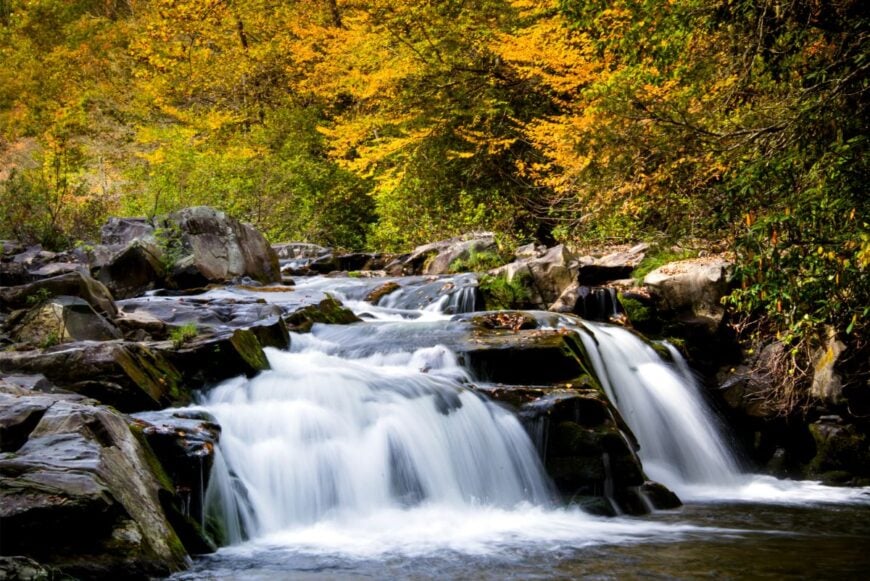
Nantahala feels ancient—named by the Cherokee, and still echoing with the hush of gorges, river songs, and ancestral valleys. Its sense of seclusion flows from the vast forest and deep ravines that cradle it.
The vibe is spiritual and serene, with river trails, old‑growth canopy, and an echo of ancient paths. You can paddle the Nantahala River, visit Lake Nantahala, hike in shaded gorges, explore Cherokee heritage, or float beneath cathedral forests.
Tourism tied to nature and heritage keeps its heartbeat slow. It’s the kind of place that breathes you into stillness.
Where is Nantahala?
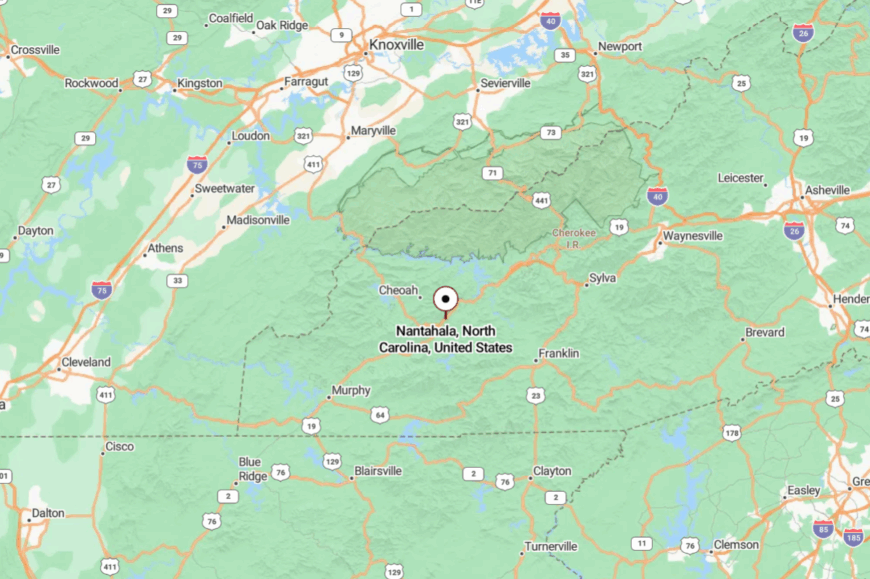
The Nantahala Township lies in western Macon County, west of Wayah Gap, roughly 60 miles southwest of Asheville. You enter via winding mountain highways that dip into the gorge and climb out again. Each mile eases the world away—quiet, deep, and timeless.
17. Love Valley: A Horseback Hamlet in the Hills
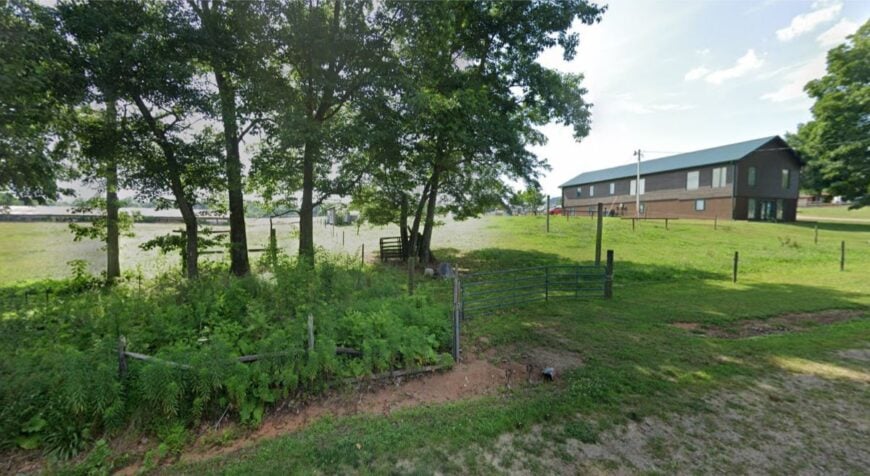
Love Valley is a charming curiosity nestled in the Brushy Mountains—a cowboy town where cars are replaced by horses and time seems to stroll. Seclusion springs from its remote valley setting and its Old West design.
The vibe is whimsical and pastoral, with wooden hitching posts, saloon fronts, and rodeo dust. Horseback rides, valley trail rides, rodeos, visiting the general store, and soaking in horse‑loving culture are its highlights.
Visitors trail in for tranquility and simplicity. It’s a place that reminds you how warmly gentle solitude can be.
Where is Love Valley?
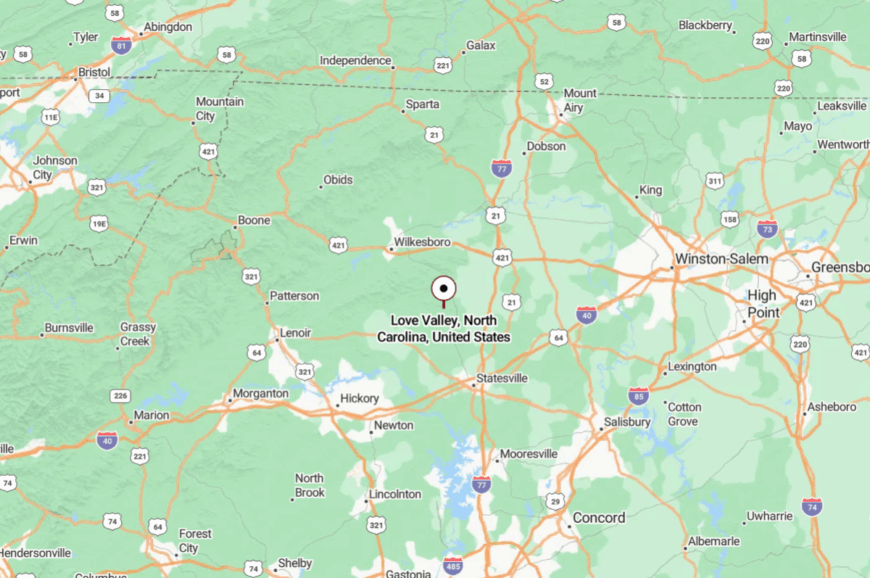
Tucked in northwestern Iredell County, Love Valley sits deep in a remote brushy‑mountain hollow, some 80 miles north of Asheville. You approach by winding country roads that dip and rise, the trees closing in as if pulling you deeper into story. You arrive and your boots still carry the echo of hooves.
16. Brasstown: Folk Arts and Smoky Haze
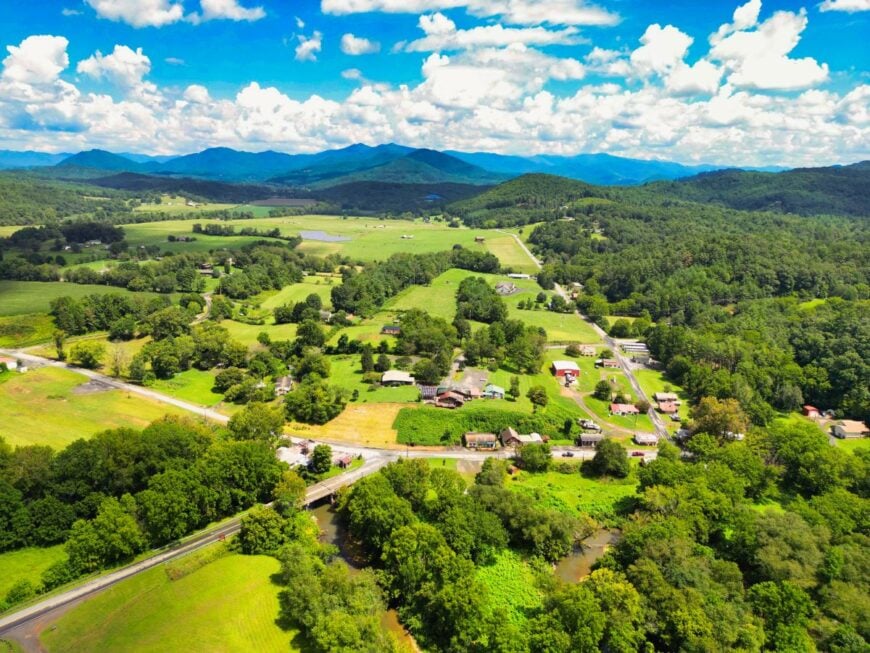
Brasstown is a quiet cradle of Appalachian craft, where folk songs float across green hilltops and old‑world artistry breathes quietly in studios. Its seclusion grows from its high‑valley location and the way it slips beneath commercial maps.
The vibe is creative and tranquil, with potters shaping clay, musicians sharing twang, woods humming gently. Explore the John C. Campbell Folk School, wander local galleries, hike nearby trails, enjoy traditional Appalachian music, or shop handmade wares. Folk arts and small‑scale tourism sustain it.
It’s the kind of place that tugs on your heart with the softness of a prayer in woodwinds and woodsmoke.
Where is Brasstown?
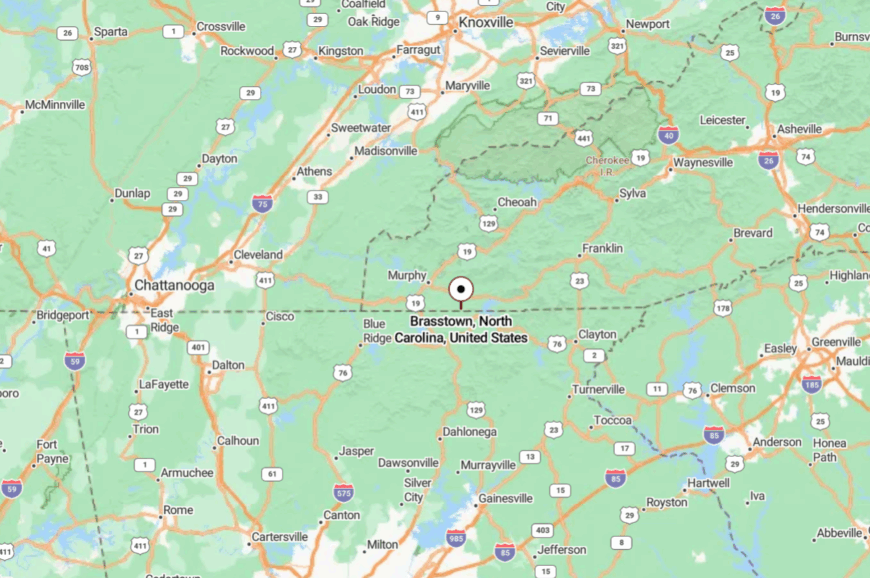
Brasstown rests in Clay County, high among the southwestern ridges, about 100 miles southwest of Asheville. A twisting, forest‑framed road leads you there—few signs, one‑lane bridges, and the hush of distance. It’s a soft dive into culture held gently in mountain palms.
15. Hayesville: Courthouse Squares and Valley Peace

Hayesville is a kindly valley hamlet with a cozy heart—its courthouse square blooming each season with festivals, whispers of library stories, and hints of Cherokee roots.
Its seclusion stems from being the tiny county seat in a quiet mountain pocket. The vibe is neighborly and historical, with green lawns, modest theaters, and a timeless pace. Things to do include enjoying the Festival on the Square, visiting the local heritage library, catching a performance at the Peacock Performing Arts Center, hiking nearby trails, or simply sitting on a bench among old tree shade.
Community and heritage color its economy. It’s the kind of place that reminds you how slow can feel like a sanctuary.
Where is Hayesville?
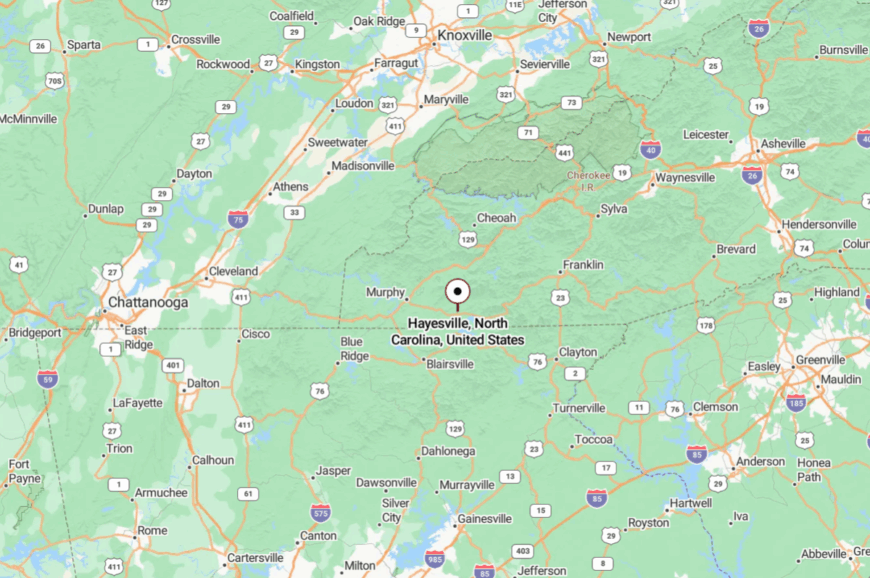
Situated in Clay County near the Tennessee border, Hayesville lies about 110 miles west of Asheville. A rural highway leads you through folded ridges and quiet farm glades. You arrive, and it feels familiar—like a memory you haven’t visited yet.
14. Collettsville: A Forest Hamlet Lost in Time
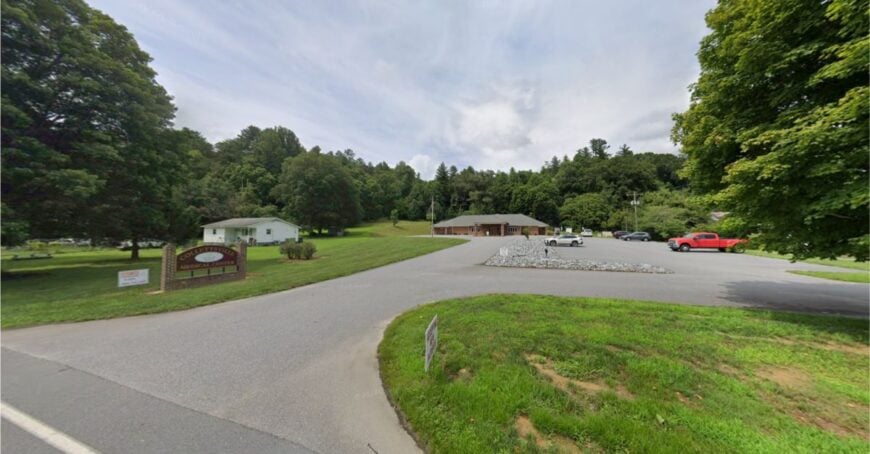
Collettsville feels like a forgotten forest settlement where time drips slow like mountain dew on moss-covered stones. Cradled by the Wilson Creek Wilderness Area, it’s tucked away in a hollow far from urban sprawl or noisy highways.
The vibe is secluded and almost mythical—gravel roads, creekside cabins, and dense woods whisper of stories left behind. Visit the Pisgah Loop Scenic Byway, explore remote waterfalls like Harper Creek Falls, fish in the crystal-clear streams, or find solitude beneath rhododendron arches.
There’s no downtown here—just scattered homes, quiet trails, and the sound of wind through the trees. It’s the kind of place that welcomes silence and leaves you feeling small in the best possible way.
Where is Collettsville?
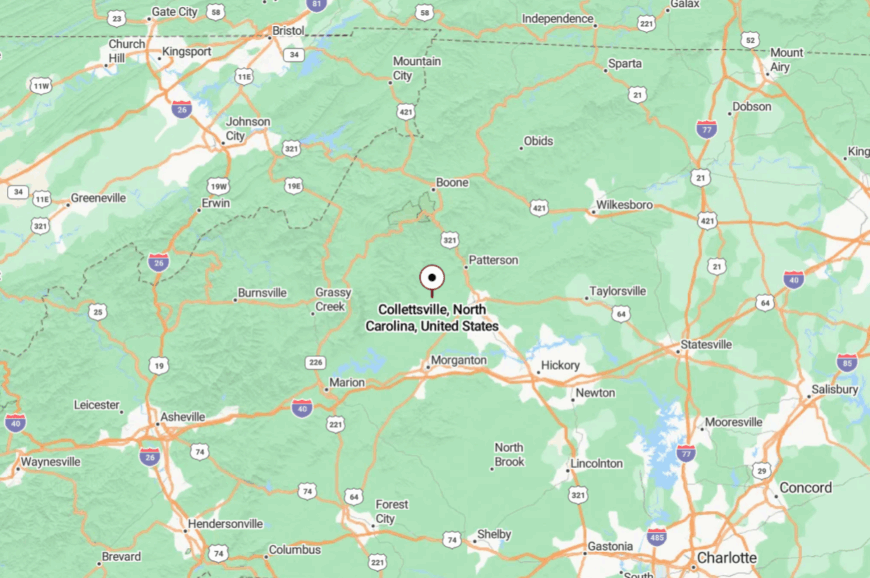
Collettsville is in Caldwell County, hidden in the foothills near the Pisgah National Forest, roughly 80 miles northeast of Asheville. It’s accessed by rural mountain roads like NC-90 and Brown Mountain Beach Road, which fade from pavement to gravel as you descend into the valley.
The forest thickens and phone signals fade as you near town. You don’t stumble upon Collettsville—you quietly arrive.
13. Hot Springs: Riverside Quietude and Mountain Magic
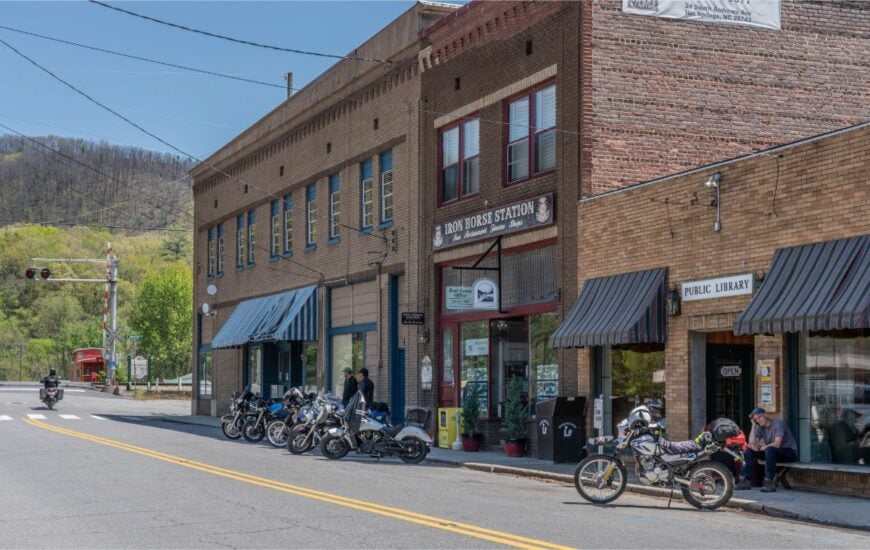
Hot Springs is a hidden gem where the Appalachian Trail crosses the French Broad River, and the sound of rushing water replaces the noise of traffic. Its seclusion is undeniable—surrounded by Pisgah National Forest and miles from the nearest city, it feels like a world tucked between river and ridge.
The vibe is rustic and rejuvenating, with a handful of cafes, cozy lodges, and healing mineral springs that bubble beneath the surface. Popular activities include soaking in the natural hot springs, hiking Lovers Leap Trail, rafting the French Broad, browsing small local shops, or catching live bluegrass at the local tavern.
Tourism centered on wellness and hiking sustains the community, but it’s never overwhelming. It’s the kind of place where you lose track of time and rediscover your breath.
Where is Hot Springs?

Located in Madison County in the far western part of the state, Hot Springs lies about 35 miles northwest of Asheville. You reach it via U.S. Route 25/70, a winding road that follows the curves of the French Broad River into a forested valley.
The approach feels like a gentle descent into stillness. Close enough for a weekend getaway, but distant enough to feel completely unplugged.
12. Blowing Rock
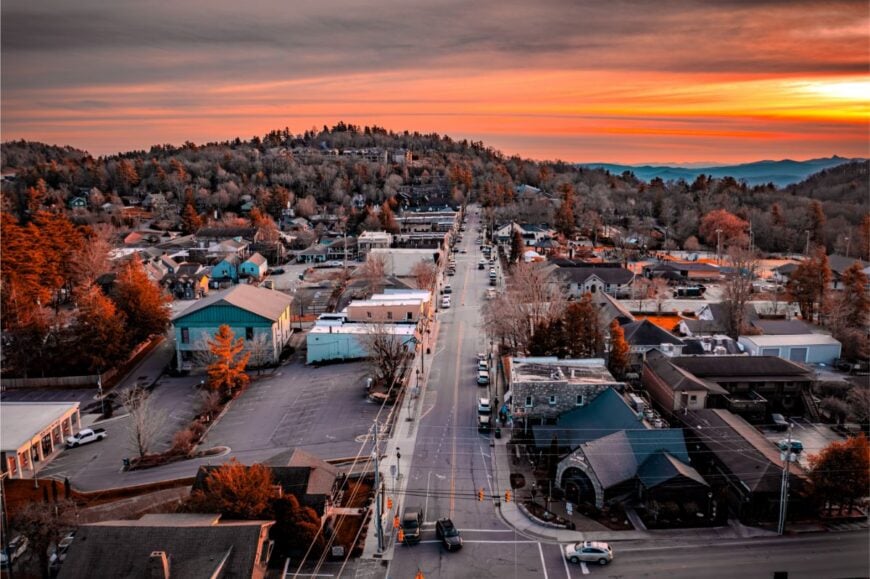
Blowing Rock clings to a windswept spur where mountain vistas breathe beyond hedge‑rows, waterfalls hum nearby, and theater lights glow softly at dusk. Its seclusion comes from elevation and the rocky crags that cradle it.
The vibe is scenic and theatrical, with galleries, winding trails, and old‑town magic. Hike to three waterfalls, visit The Blowing Rock overlook, explore cozy galleries and boutiques, catch a local performance, or stroll landscaped lanes.
Tourism and arts are its lifeblood. It’s the kind of town that makes you pause, look, and swear you’ve found a part of yourself hidden above the clouds.
Where is Blowing Rock?
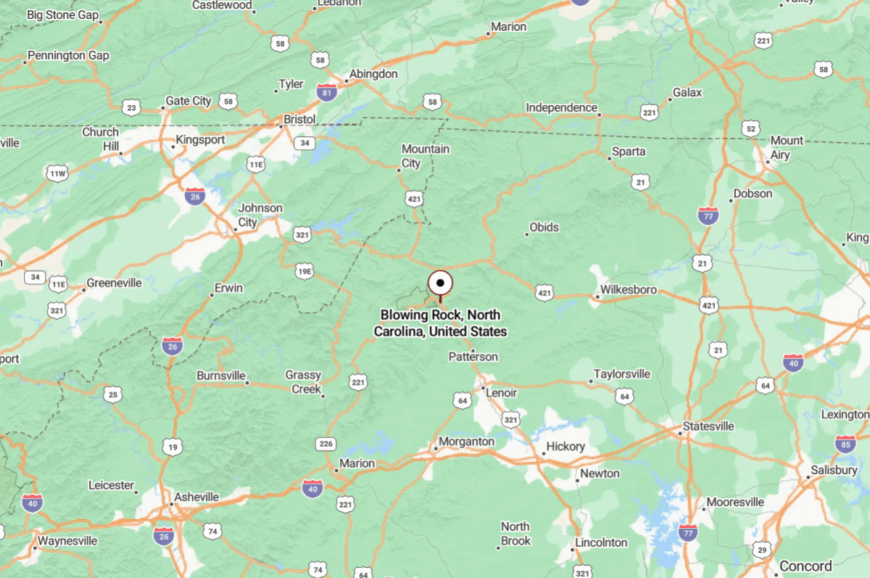
Perched on the Blue Ridge Mountains in Watauga County, about 60 miles north of Asheville, Blowing Rock is reached via steep, winding highways through forest and stone. The journey curves upward until suddenly—the view unfolds. It’s accessible yet feels like the sky reached down to whisper.
11. Black Mountain
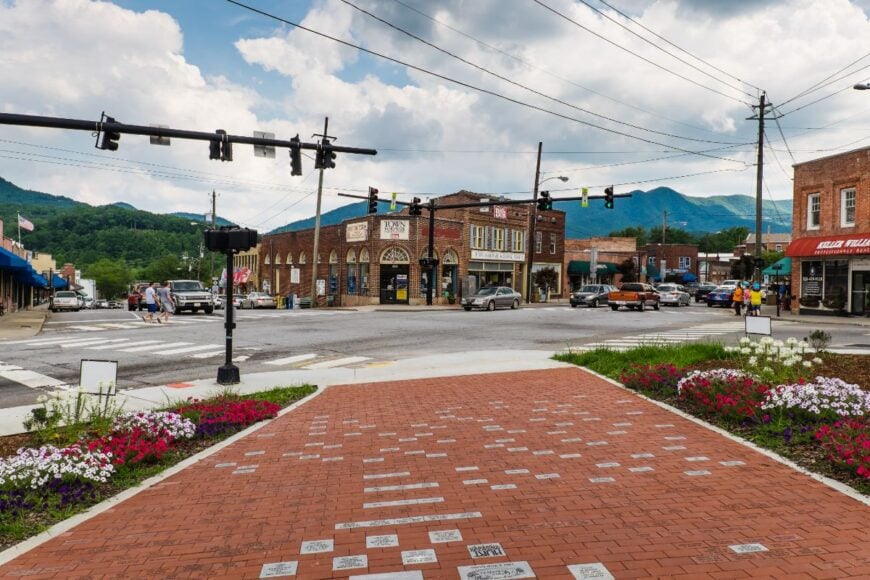
Black Mountain is a gentle echo of Asheville, where cobbled sidewalks lead to artisan markets and forested outskirts beckon without the bustle. Tucked off I‑40 in the shadow of Lookout Mountain, it feels tucked‑away yet alive.
The vibe is warm, artsy, and grounded, with galleries, cafés humming low conversations, and woods just steps away. Visit the Tailgate Market, dine international at local cafés, hike Lookout Mountain, browse art galleries, or attend live shows at White Horse Black Mountain.
Culture and local commerce keep the pulse steady. You come, and it’s like stepping into a friend’s soft handshake—it’s home before you know it.
Where is Black Mountain?
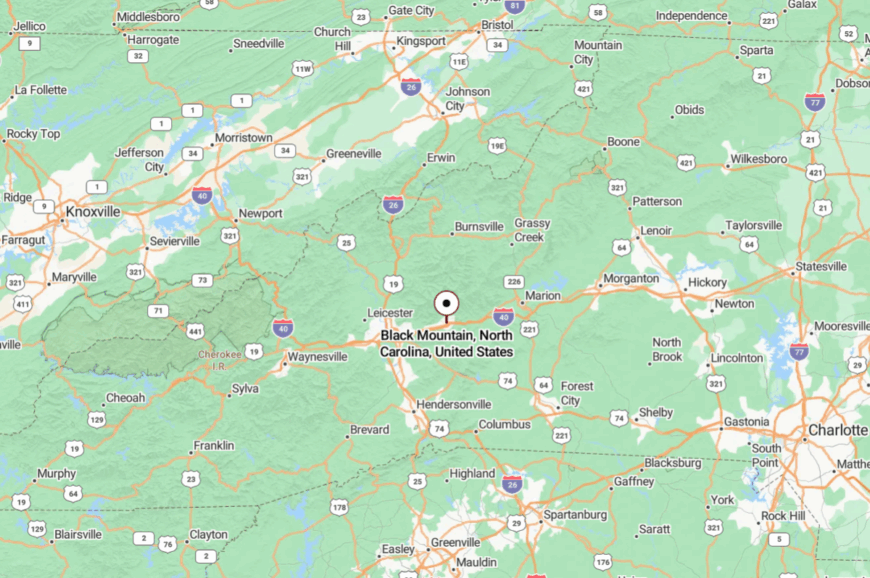
Black Mountain sits in eastern Buncombe County, roughly 15 miles east of Asheville along I‑40. A short, wooded road off the interstate drops you into a walkable downtown cocooned by forest. You feel removed, even though you’re close—it’s the most comforting kind of escape.
10. Micaville: Rural Serenity in Yancey County

Micaville is a small unincorporated community with a population of just a few hundred, offering a genuine taste of rural life. Whenever I’m in Micaville, I love visiting local artisan shops and exploring the surrounding countryside.
The town doesn’t have major industries; instead, it thrives on small businesses and local craftsmanship. What makes Micaville truly secluded is its spacious landscapes and the peaceful atmosphere that pervades the area.
With minimal commercial development, it’s easy to find a quiet spot to relax and enjoy the sounds of nature. The rolling hills and open fields create a sense of tranquility that’s hard to match.
Where is Micaville?

Nestled in Yancey County, Micaville is situated at the intersection of U.S. Route 19E and North Carolina Highway 80. Its location away from bustling cities contributes to its serene environment. The town is surrounded by the Blue Ridge Mountains, enhancing its secluded feel.
To get there, I usually take a scenic drive from Asheville, enjoying the mountain vistas along the way. The journey itself is part of the charm, with winding roads that underscore the sense of getting away from it all.
9. Linville Falls Community: Tucked Away Near Majestic Waterfalls

The Linville Falls community is a peaceful enclave with a population of less than 500, making it a perfect spot for nature lovers like me. One of my favorite activities is hiking to the breathtaking Linville Falls, a hidden gem that’s less crowded than other tourist spots.
The area doesn’t have significant industries, maintaining its focus on preserving the natural beauty. Large woodland lots and minimal development keep the community feeling untouched. The dense forests and proximity to the Linville Gorge make it a secluded paradise for those seeking solitude.
Where is the Linville Falls Community?

Located in Burke County, the Linville Falls community sits near the Blue Ridge Parkway, offering easy access yet remaining hidden among the trees. Its seclusion is enhanced by the surrounding Pisgah National Forest, which provides a natural barrier from overdevelopment.
When I visit, I take the Parkway to Milepost 316.4, then venture onto local roads that wind through the forest. The journey underscores the area’s remoteness, with each turn bringing a deeper sense of peace and separation from the hustle of everyday life.
8. Fontana Village: Mountain Seclusion Near Fontana Lake

Fontana Village is a small resort community with an ever-changing population, depending on the season, but it always feels intimate and cozy. I enjoy staying at the historic Fontana Village Resort, where outdoor activities like hiking and boating on Fontana Lake await.
The main industry here is tourism, but it’s centered around those seeking a quiet retreat rather than bustling attractions. The expansive natural surroundings and minimal development make it feel wonderfully secluded. Nestled in the mountains, it’s a place where you can disconnect and immerse yourself in nature.
Where is Fontana Village?

Situated in Graham County, Fontana Village is located near the southwestern edge of the Great Smoky Mountains National Park. Its remote location is accentuated by the dense forests and mountainous terrain.
I usually access it via U.S. Route 28, a scenic road that meanders through the hills. The lack of major highways and limited cell service emphasize the seclusion. Getting there feels like a journey into a peaceful wilderness, far removed from the busy world.
7. Valle Crucis: Secluded Valleys and Historic Charm

Valle Crucis is a charming rural community with a population of around 1,400, known for its rich history and picturesque setting. I love visiting the original Mast General Store, which has been serving the community since 1883. The area doesn’t have large industries; instead, it thrives on local businesses and agriculture.
The town’s seclusion comes from its location in a serene valley surrounded by rolling hills and the Watauga River. It’s a place where you can enjoy open spaces, historic sites, and a slower pace of life.
Where is Valle Crucis?

Located in Watauga County, Valle Crucis is nestled between Banner Elk and Boone. Its secluded feel is enhanced by the lack of major highways passing through town. When I drive there, I take N.C. Highway 194, a winding road that offers beautiful views of the countryside.
The community’s position in a valley and the surrounding Appalachian Mountains make it feel tucked away from the rest of the world. It’s an easy drive but feels like a true escape.
6. Lake Toxaway: Exclusive Seclusion by Pristine Waters

Lake Toxaway is a private community with a population that varies seasonally, but it always maintains an air of exclusivity. I appreciate the tranquility of North Carolina’s largest private lake, where boating and fishing are favorite pastimes. The main industry is upscale tourism and real estate, with large estate lots and luxury homes.
The seclusion here is intentional, with natural barriers like forests and mountains providing privacy. The community’s controlled access ensures a peaceful environment away from crowded public spaces.
Where is Lake Toxaway?

Situated in Transylvania County, Lake Toxaway is nestled in the heart of the Appalachian Mountains. Its remote location is further enhanced by the surrounding Pisgah National Forest.
I reach it via U.S. Route 64, which offers a scenic drive through mountainous terrain.The community’s seclusion is part of its charm, offering residents and visitors a chance to unwind in a pristine natural setting without the intrusion of urban life.
5. Little Switzerland: A Quiet Retreat with European Charm

Little Switzerland is a quaint community with a population of just a few dozen, but it captures my heart every time I visit. The European-style chalets and shops give the town a unique atmosphere. While tourism is a part of the local economy, it’s modest and focused on those appreciating the quiet beauty of the area.
Perched atop the Blue Ridge Mountains, the town’s seclusion comes from its elevation and the surrounding wilderness. Away from busy tourist areas, it offers stunning views and a peaceful retreat.
Where is Little Switzerland?

Located in McDowell and Mitchell counties, Little Switzerland sits along the Blue Ridge Parkway at Milepost 334. Its lofty position provides breathtaking vistas and a sense of remoteness.
I access it via the Parkway or N.C. Highway 226A, both of which offer winding roads through the mountains. The lack of nearby urban centers and the majestic natural surroundings make Little Switzerland feel like a hidden enclave high above the world.
4. Glenville: Lakeside Seclusion in the Mountains

Glenville is a small community with an approximate population of 110, offering serene lakeside living. I often find myself drawn to Lake Glenville for its clear waters and opportunities for kayaking and fishing. There aren’t major industries here, allowing nature to take center stage.
The town’s seclusion is due to the vast undeveloped lands and the protective embrace of the surrounding mountains. It’s a place where privacy is valued, and the natural beauty is preserved.
Where is Glenville?

Situated in Jackson County, Glenville is accessible via N.C. Highway 107 between Sylva and Cashiers. Its location away from major highways contributes to its peaceful atmosphere. When I drive there, the journey includes winding roads that showcase the area’s forests and mountain landscapes.
The secluded nature of Glenville is part of its appeal, offering a lakeside refuge away from the noise and congestion of city life.
3. Almond: Seclusion Near Nantahala National Forest

Almond is a quiet, unincorporated community with a population of under 200, nestled near the Nantahala National Forest. I enjoy the serenity of the area and the proximity to outdoor activities like hiking and white-water rafting on the Nantahala River.
There are no major industries disrupting the peace, just a focus on enjoying the natural surroundings. Almond’s seclusion comes from its location amidst vast forests and its distance from urban centers. Large acreages and minimal development make it a haven for those seeking solitude.
Where is Almond?

Located in Swain County, Almond is accessible via U.S. Route 74, but it remains tucked away in the mountains. The community’s seclusion is heightened by the surrounding forested lands and limited infrastructure.
When I visit, the drive through the Nantahala Gorge adds to the sense of leaving the busy world behind. Almond feels like a gateway to the wilderness, perfect for disconnecting and immersing oneself in nature.
2. Balsam Grove: Peaceful Living Amidst Waterfalls

Balsam Grove is a rural community with a population of around 200, known for its lush landscapes and proximity to waterfalls. I love exploring the nearby trails that lead to hidden gems like Courthouse Falls. The area doesn’t have significant industries, keeping the focus on nature and small-scale farming.
Its seclusion comes from being nestled within the Pisgah National Forest, away from major roads and commercial zones. The tranquility and abundant wildlife make it a perfect spot for peaceful living.
Where is Balsam Grove?

Located in Transylvania County, Balsam Grove sits along North Carolina Highway 215. Its remote location is enhanced by the surrounding mountains and forests. When I travel there, the journey through the Blue Ridge Mountains reinforces the secluded feel.
The community is off the beaten path, accessible by winding roads that offer stunning views and a sense of adventure. It’s a destination for those who appreciate the quiet beauty of nature.
1. Cedar Mountain: A Hidden Gem in the Forests

Cedar Mountain is an unincorporated community with a population of around 700, nestled within the dense Pisgah National Forest. I often visit to enjoy DuPont State Recreational Forest, famous for its waterfalls and hiking trails.
There aren’t major industries here; instead, small businesses and outdoor recreation shape the community. What makes Cedar Mountain secluded are the expansive lot sizes and natural barriers that keep it far from urban hustle. The towering trees and serene environment provide a perfect escape into nature.
Where is Cedar Mountain?

Situated in Transylvania County near the South Carolina border, Cedar Mountain is accessible via U.S. Route 276. Its location within the forest contributes to its secluded atmosphere. When I drive there, the roads wind through thick woods, reinforcing the sense of entering a hidden world.
The lack of commercial development and the embrace of the natural landscape make Cedar Mountain an ideal spot for those seeking peace and a deep connection with the outdoors.


